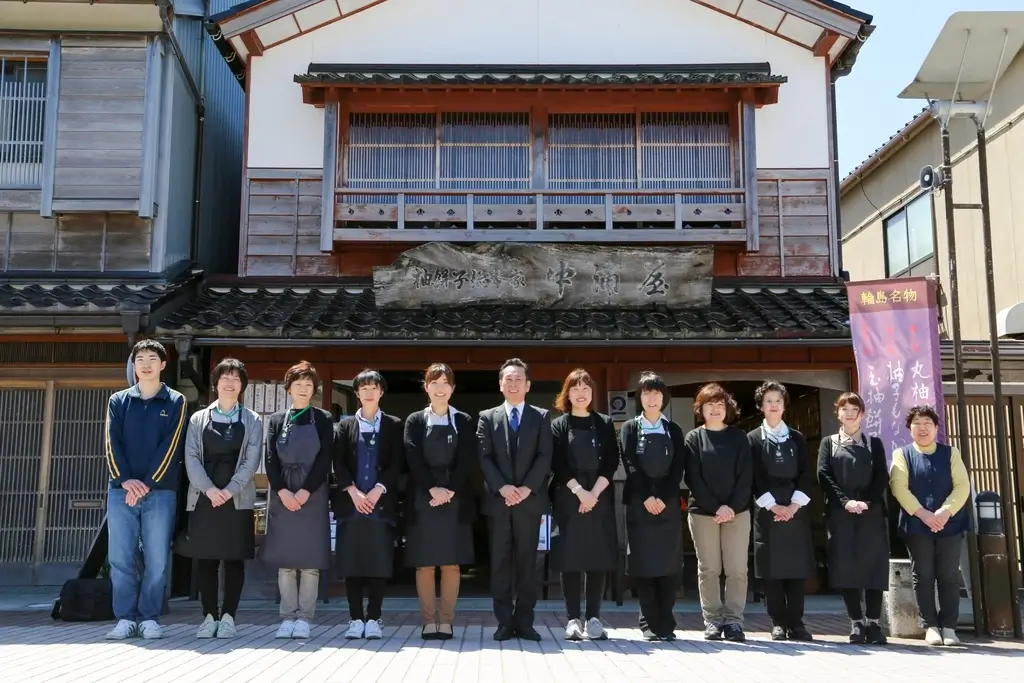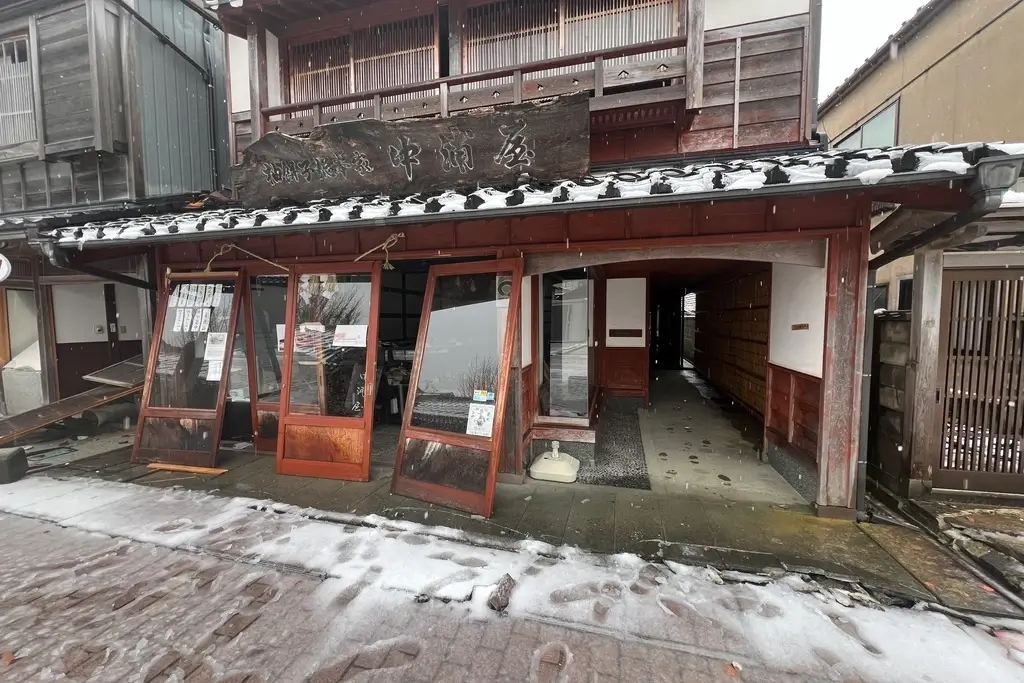Yuzu Senbei from Nakauraya: An Amazing Snack from Ishikawa!

Thalia Harris
Posted on November 08, 2024
Share:

Imagine biting into a crisp rice cracker that suddenly bursts with the bright, citrusy flavor of Japan’s beloved yuzu fruit. That’s the magic of Nakauraya’s yuzu senbei, a mouthwatering treat that captures the essence of Ishikawa Prefecture in every bite.
What is yuzu?
Yuzu is a special citrus fruit from Asia, especially Japan and China. It looks like a small lemon or a bumpy orange, usually about the size of a golf ball. When it’s ripe, it turns bright yellow and has a strong, fresh smell that many people find pleasant.

This fruit has been used in Japan for over a thousand years! At first, it was mainly used for medicine, but people soon discovered how delicious it is in cooking. The best yuzu comes from the Kochi Prefecture in Japan, where farmers grow this unique fruit.
The taste of yuzu is a mix of tartness like a lemon and sweetness like a mandarin orange. Because of this unique flavor, yuzu is common in many dishes. You can find it in sauces, dressings, drinks, and desserts! One widespread use is in yuzu kosho, a spicy paste made with yuzu peel and chili peppers. Another favorite is ponzu sauce, which combines yuzu juice with soy sauce and vinegar to create a tangy flavor.
Where is Nakauraya, and when was it founded?
Nakauraya is a famous sweet shop located in Wajima City, which is in Ishikawa Prefecture. It was founded in the autumn of 1910 by Nakaura Katsuki. He had spent many years learning how to make delicious sweets before starting his own business. Even though he faced many challenges, Nakaura built a company that has stayed true to its roots. Today, Nakauraya is famous for creating authentic, handmade sweets celebrating traditional Japanese flavors.

How do they incorporate yuzu in their snacks?
Nakauraya mainly uses yuzu to create a famous sweet, Maru-Yubeshi. To make this treat, they pick yuzu fruits in the fall. The insides of the yuzu are carefully scooped out, leaving just the outer peel. This empty peel is filled with seasoned mochi, a sticky rice paste.
After being stuffed, the yuzu is steamed in a unique seiro basket. Once steamed, the Maru-Yubeshi is left to dry naturally for an extended period. As it dries, it transforms into a beautiful amber-orange color. This process takes about six months, so Maru-Yubeshi can only be produced yearly.

Nakauraya also creates a delicious snack known as yuzu senbei, which are traditional Japanese rice crackers. To make yuzu senbei, they combine high-quality rice ground into fine flour. The unique flavor of yuzu is then added to the dough, giving the senbei a refreshing citrus taste that sets it apart from regular rice crackers.
Once the dough is prepared, it is shaped into thin discs and carefully baked until it becomes crispy and golden brown. The baking process allows the bright aroma of yuzu to fill the air, making these snacks not only tasty but also fragrant.
Yuzu senbei is loved for its perfect balance of crunchiness and zesty flavor, making it a popular choice for those looking to enjoy a light snack. Whether eaten alone or paired with tea, these rice crackers showcase the delightful taste of yuzu in a fun way.
Would you like to try Nakauraya’s yuzu senbei? Check out Sakuraco! In this month’s box, we have artisanal snacks from all across Ishikawa Prefecture to support the area in its recovery from the Noto earthquake.

How did the Noto earthquake affect them?
The Noto Peninsula earthquakes have significantly impacted Nakauraya over the years. In 2007, an earthquake destroyed their factory and warehouse. Even though this was a challenging situation, they worked hard to rebuild and moved their business to a new location within a year.
Unfortunately, in 2024, another earthquake hit the Noto Peninsula, causing even more damage. This time, their factory was destroyed again, forcing them to relocate for a second time. After this earthquake, Ayumi Chikamoto, the CEO of Sakuraco, visited Nakauraya to show support and emphasize how important this traditional sweet shop is to Japan’s culture.

Despite these challenges, Nakauraya is determined to keep making its delicious treats. Recently, it has started sharing its famous product, Maru Yubeshi, in Japan and international markets like the United States. It has expanded its product line and begun making items specifically for export.
Throughout all this, Nakauraya has stayed true to its traditional handmade methods while finding new ways for people to enjoy its sweets. It takes pride in its careful craftsmanship, especially in creating products that highlight the wonderful aroma of yuzu.

Why is Nakauraya significant?
Nakauraya is significant because it offers a unique selection of high-quality snacks celebrating the rich flavors of traditional Japanese cuisine from Ishikawa Prefecture. By focusing on these unique and flavorful snacks, Nakauraya is essential in preserving Japan’s culinary heritage while introducing these delightful treats to a broader audience. s. Would you ever try these snacks? Let us know in the comments below!

Discover authentic flavors with Sakuraco
Get Sakuraco 

Discover authentic flavors with Sakuraco
Get Sakuraco 
Related Articles

Aaron and Claire Show Us How to Make Gyudon!
If you’re looking for a Japanese comfort food that’s quick, affordable, and full of flavor, Aaron and Claire have a great option. In this video, Aaron shows how to make Gyudon using ground beef instead of the usual thinly sliced beef.

Tonkatsu Luxury Restaurants: Best Ones to Try!
Don’t miss out on tonkatsu if you’re traveling to Japan! Tourists often add the meal to their must-eat list because of its delicious and satisfying nature. Even better, you can elevate the experience by going to luxury restaurants across Japan, where you can experience some of the most celebrated pork cutlets.

Mochi: How is Mochitsuki Made in Japan?
Mochitsuki is the Japanese tradition of pounding steamed rice to make mochi for the New Year. Families and neighbors gather to participate in this lively and meaningful tradition. The teamwork involved helps everyone feel a sense of connection.

Konpeito Candy: What Makes This Starry Treat Shine?
If you are a fan of the famous Demon Slayer series, then you probably know that the favorite treat of the adorable Nezuko Kamado is those tiny, colorful little sweets.


